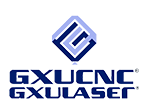Laser welding has become a widely used method of joining metal parts together in various industries. Compared with traditional welding techniques, it has several advantages, but it also has certain limitations. In this article, we'll explore the advantages and disadvantages of laser welding machines.
Advantages of laser welding machine:
1. Precision: Laser welding machines have exceptional accuracy and precision, enabling highly controlled fine welding. The focused laser beam enables welders to achieve precise positioning and weld depth control, resulting in high-quality welds even on complex and delicate parts.
2. Speed: Compared with traditional welding methods, laser welding is a fast process. The laser beam delivers energy rapidly, causing rapid heating and solidification of the weld. Increased speed makes laser welding particularly beneficial for high-volume production environments where time efficiency is critical.
3. Non-contact: Unlike traditional welding techniques that require physical contact between the welder and the workpiece, laser welding is a non-contact process. The laser beam is directed onto the target area without direct contact and reduces the risk of contamination or damage to the part. This is especially beneficial for delicate or sensitive materials that may be adversely affected by conventional welding techniques.
4. Versatility: Laser welding machines can be used to join various types of metals and alloys, including dissimilar materials. They are also suitable for a wide range of thicknesses, from thin foils to thick plates. This versatility allows manufacturers to handle a variety of welding applications with one machine, reducing the need for multiple welding methods and equipment.
5. Reduce heat input: Compared with traditional methods, laser welding minimizes heat input during welding. The focused laser beam creates a concentrated heat source, reducing heat transfer to the surrounding area. Reduced heat input means less deformation and damage to the workpiece, making laser welding suitable for delicate components or materials that are prone to deformation at high temperatures.
Disadvantages of laser welding machine:
1. Cost: One of the main disadvantages of laser welding machines is their high initial cost. The complex techniques and precision machinery involved in laser welding make the machines expensive to purchase and maintain. This cost factor can limit the possibilities of laser welding for small businesses or businesses with limited budgets.
2. Skill requirements: Laser welding requires well-trained and skilled operators to ensure the best results. The complexity of the laser welding process requires expertise in laser beam manipulation, beam focusing and parameter adjustment. The training and skills required for laser welding can be a deterrent for some companies, as it involves investing in specialized training programs and experienced personnel.
3. Limited penetration: Laser welding may have limited penetration capabilities compared to some traditional welding techniques. The depth of penetration achievable with laser welding is generally shallow, making it less suitable for certain applications that require deep penetration welding. However, advances in laser technology continue to increase penetration capabilities.
4. Safety considerations: Laser welding involves the use of a highly concentrated laser beam, which presents potential health and safety risks. Appropriate safety measures must be taken to protect the operator from hazardous radiation. This includes using safety glasses, safety barriers, and maintaining adequate ventilation in the welding area.
In conclusion, laser welding machines offer many advantages including precision, speed, non-contact operation, versatility and reduced heat input. However, they also have certain disadvantages, such as high cost, technical requirements, limited penetration, and safety concerns. Understanding these advantages and disadvantages is critical to determining whether laser welding is the best welding method for a particular application. As technology continues to advance, laser welding continues to evolve, addressing some of these limitations and expanding its potential applications across industries.
Post time: Jul-26-2023



